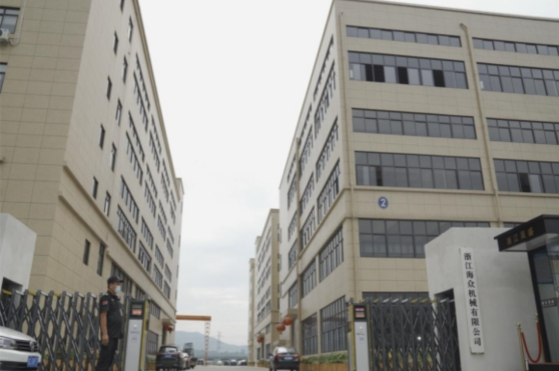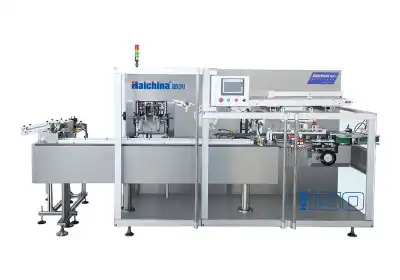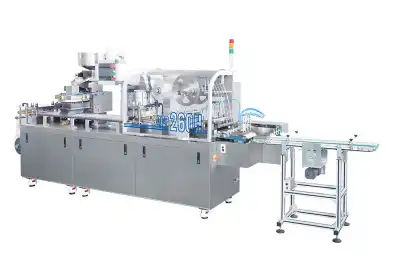The Fundamentals of GMP in Pharmaceutical Manufacturing
Defining GMP Standards
GMP standards are a set of guidelines that ensure pharmaceuticals are produced consistently and meet specific quality criteria. These standards encompass various aspects of the manufacturing process, including facility design, equipment maintenance, and personnel training. The primary goal is to minimize risks involved in any pharmaceutical production that cannot be eliminated through testing the final product.
Key Components of GMP
The core components of GMP include quality management, sanitation and hygiene, qualification and validation, documentation, and quality control. Each of these elements plays a crucial role in maintaining the integrity of the manufacturing process. For instance, proper documentation ensures traceability, while quality control measures, including the use of a blister cartoning machine, prevent defective products from reaching consumers.
Evolution of GMP Regulations
GMP regulations have evolved significantly since their inception. Initially focused on basic hygiene and documentation, they now incorporate advanced concepts like risk management and quality by design. This evolution reflects the growing complexity of pharmaceutical manufacturing and the increasing emphasis on product safety and efficacy. Modern GMP guidelines also address the challenges posed by globalization and technological advancements in the industry.
Implementing GMP in Pharmaceutical Production Processes
Design and Validation of Production Facilities
Implementing Good Manufacturing Practices (GMP) begins with the thoughtful design and construction of pharmaceutical production facilities. These facilities must be engineered to minimize risks such as contamination, cross-contamination, and mix-ups. Key considerations include optimized workflow layouts, efficient air handling and filtration systems, and secure storage for raw materials and finished products. Validation processes rigorously test these facilities to ensure they consistently comply with GMP standards. For example, blister packaging machines for pharmacy use must be validated to guarantee that product integrity and sterility are preserved throughout the entire packaging operation.
Quality Control and Assurance Procedures
Quality control and assurance form the backbone of GMP compliance in pharmaceutical manufacturing. This involves implementing comprehensive testing protocols for raw materials, intermediates, and finished products to ensure safety and efficacy. Equipment such as blister cartoning machines are integral to the packaging phase, where precise handling and sealing maintain product quality. Regular calibration, preventive maintenance, and performance verification of these machines are essential to avoid deviations and ensure consistent adherence to GMP standards. These quality assurance measures help prevent defects and ensure patient safety.
Training and Personnel Management
A well-trained workforce is critical for successful GMP implementation. Employees across all levels—from production operators to supervisory and managerial staff—must receive thorough education on GMP principles, emphasizing their role in maintaining compliance. Training programs should cover standard operating procedures, hygiene practices, documentation requirements, and change control processes. Regular refresher courses and updates on evolving regulations help maintain workforce competence and awareness. Cultivating a culture of quality and responsibility among personnel reduces errors and supports sustained GMP adherence throughout pharmaceutical production.
The Impact of GMP on Product Quality and Patient Safety
Ensuring Consistency in Drug Manufacturing
One of the primary benefits of GMP is the consistency it brings to drug manufacturing. By following standardized procedures and using validated equipment like blister packaging machines for pharmacy products, pharmaceutical companies can ensure that each batch of medication meets the same high-quality standards. This consistency is crucial for patient safety and treatment efficacy, as it guarantees that patients receive the same dosage and quality of medication with each prescription.
Reducing Risks of Contamination and Error
GMP guidelines significantly reduce the risks associated with pharmaceutical manufacturing. By implementing strict controls on raw materials, production processes, and packaging, the likelihood of contamination or errors is minimized. For example, the use of modern blister cartoning machines not only increases efficiency but also reduces the risk of human error in the packaging process. These machines are designed to operate in controlled environments, further mitigating contamination risks.
Enhancing Traceability and Recall Efficiency
GMP's emphasis on comprehensive documentation and record-keeping enhances product traceability. In the event of a quality issue or recall, this traceability allows for swift identification and isolation of affected batches. This capability is crucial for protecting public health and maintaining consumer trust. Advanced packaging technologies, integrated with GMP-compliant systems, facilitate quick and accurate tracking of products throughout the supply chain.
Conclusion
The need for GMP in the pharmaceutical industry is indisputable. It serves as the foundation for ensuring the safety, efficacy, and quality of medicinal products. By implementing GMP standards, pharmaceutical companies not only comply with regulatory requirements but also demonstrate their commitment to public health. From the design of production facilities to the use of advanced equipment like blister packaging machines for pharmacy products, every aspect of pharmaceutical manufacturing is guided by GMP principles. As the industry continues to evolve, GMP will remain a critical factor in maintaining the integrity of pharmaceutical products and safeguarding patient well-being.
Contact Us
For more information on our GMP-compliant packaging solutions, including blister cartoning machines and other pharmaceutical packaging equipment, please contact us at [email protected]. Our team of experts is ready to help you enhance your production processes and ensure compliance with the highest industry standards.





